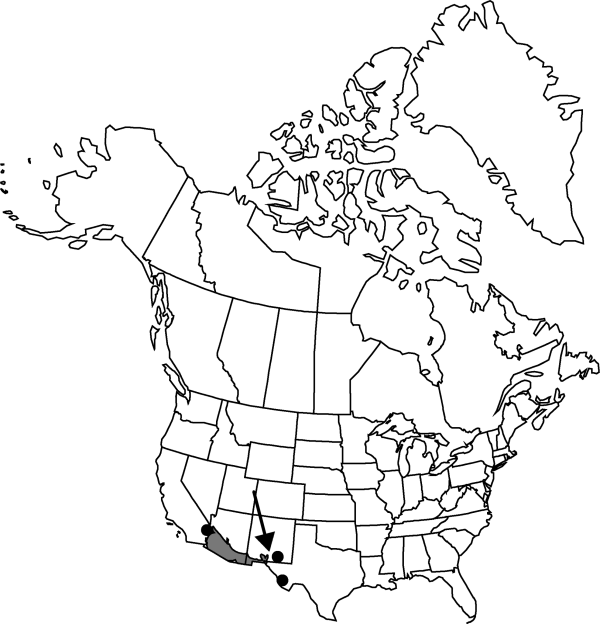Difference between revisions of "Mammillaria grahamii"
Proc. Amer. Acad. Arts 3: 262. 1856.
FNA>Volume Importer |
imported>Volume Importer |
||
| (One intermediate revision by the same user not shown) | |||
| Line 60: | Line 60: | ||
|publication year=1856 | |publication year=1856 | ||
|special status= | |special status= | ||
| − | |source xml=https:// | + | |source xml=https://bitbucket.org/aafc-mbb/fna-data-curation/src/2e0870ddd59836b60bcf96646a41e87ea5a5943a/coarse_grained_fna_xml/V4/V4_460.xml |
|subfamily=Cactaceae subfam. Cactoideae | |subfamily=Cactaceae subfam. Cactoideae | ||
|genus=Mammillaria | |genus=Mammillaria | ||
Latest revision as of 21:58, 5 November 2020
Plants branched or unbranched; branches 0–9(–17). Roots diffuse; upper portion not enlarged. Stems spheric to cylindric, usually (4–)5–16(–30) × (2.3–)3.5–6.8 cm, firm; tubercles 4.8–12(–15) × 3.5–7 mm; axils appearing naked; cortex and pith not mucilaginous; latex absent. Spines (19–)26–33(–38) per areole, glabrous; radial spines 17–35 per areole whitish or pale tan, bristlelike, 6–12 × 0.1–0.15 mm, stiff; central spines (2–)3–4 per areole, 1–3(–4) spines at least hooked (uncommonly 0 hooked), reddish to purplish brown to almost black (rarely golden brown), abaxial 1 porrect, others inconspicuous, appressed against radial spines, hookless porrect spines (3–)9.5–25 × 0.1–0.5 mm; subcentral spines 1–3 per areole, adaxial to central spines, sometimes transitional to central spines, usually straight and barely distinguishable from radial spines. Flowers ca. 2 × 1.8–3.5(–4.5) cm; outermost tepal margins minutely fringed; inner tepals bright rose-pink or rose-purple, 10–16 × 4–8 mm; stigma lobes yellow-green to green, 3–7 mm. Fruits green, turning bright red, scarlet, or carmine (rarely yellowish), elongating until clavate after color change to red is complete, 12–29 × 5–8 mm, juicy only in fruit walls; floral remnant persistent. Seeds black, 0.8–1 × 0.7–0.9 mm, pitted; testa hard, brittle; anticlinal cell walls straight; interstices conspicuously wider than pit diameters; pits bowl-shaped. 2n = 22.
Phenology: Flowering Apr–Sep; fruiting Sep–Mar.
Habitat: Chihuahuan and Sonoran desert scrub, grasslands, interior chaparral, oak woodlands, alluvial slopes, hills, canyons, silty, sandy, gravelly, or rocky soils of igneous or calcareous origin
Elevation: 80-1400 m
Distribution

Ariz., Calif., N.Mex., Tex., Mexico (Chihuahua, Sonora).
Discussion
Mammillaria grahamii is geographically variable. Past attempts to distinguish larger or western individuals as M. microcarpa have proven arbitrary.
All spine hooks on a plant may be oriented in the same direction, a trait sometimes mistakenly said to be limited to Mammillaria mainiae. Plants with short, straight central spines (rarely a mixture of both hooked and straight spines on the same stem) occur in some populations; they have been called M. oliviae or M. grahamii var. oliviae. The name Mammillaria microcarpa Engelmann has been widely used but was not validly published until after M. grahamii.
Selected References
None.